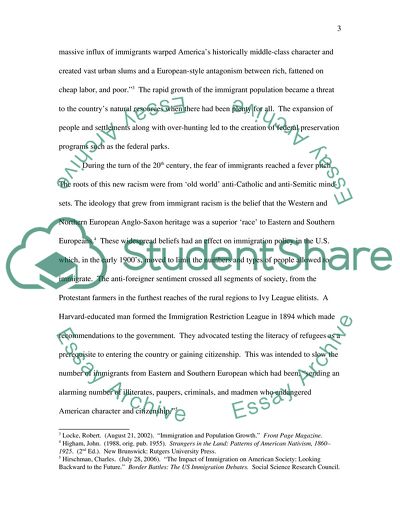Cite this document
(Immigration from 1890 to 1920 Assignment Example | Topics and Well Written Essays - 2000 words, n.d.)
Immigration from 1890 to 1920 Assignment Example | Topics and Well Written Essays - 2000 words. https://studentshare.org/history/1706450-how-did-the-new-immigration-from-southern-and-eastern-europe-affect-american-society-politics-and-economy-from-1890-to-1920
Immigration from 1890 to 1920 Assignment Example | Topics and Well Written Essays - 2000 words. https://studentshare.org/history/1706450-how-did-the-new-immigration-from-southern-and-eastern-europe-affect-american-society-politics-and-economy-from-1890-to-1920
(Immigration from 1890 to 1920 Assignment Example | Topics and Well Written Essays - 2000 Words)
Immigration from 1890 to 1920 Assignment Example | Topics and Well Written Essays - 2000 Words. https://studentshare.org/history/1706450-how-did-the-new-immigration-from-southern-and-eastern-europe-affect-american-society-politics-and-economy-from-1890-to-1920.
Immigration from 1890 to 1920 Assignment Example | Topics and Well Written Essays - 2000 Words. https://studentshare.org/history/1706450-how-did-the-new-immigration-from-southern-and-eastern-europe-affect-american-society-politics-and-economy-from-1890-to-1920.
“Immigration from 1890 to 1920 Assignment Example | Topics and Well Written Essays - 2000 Words”. https://studentshare.org/history/1706450-how-did-the-new-immigration-from-southern-and-eastern-europe-affect-american-society-politics-and-economy-from-1890-to-1920.


